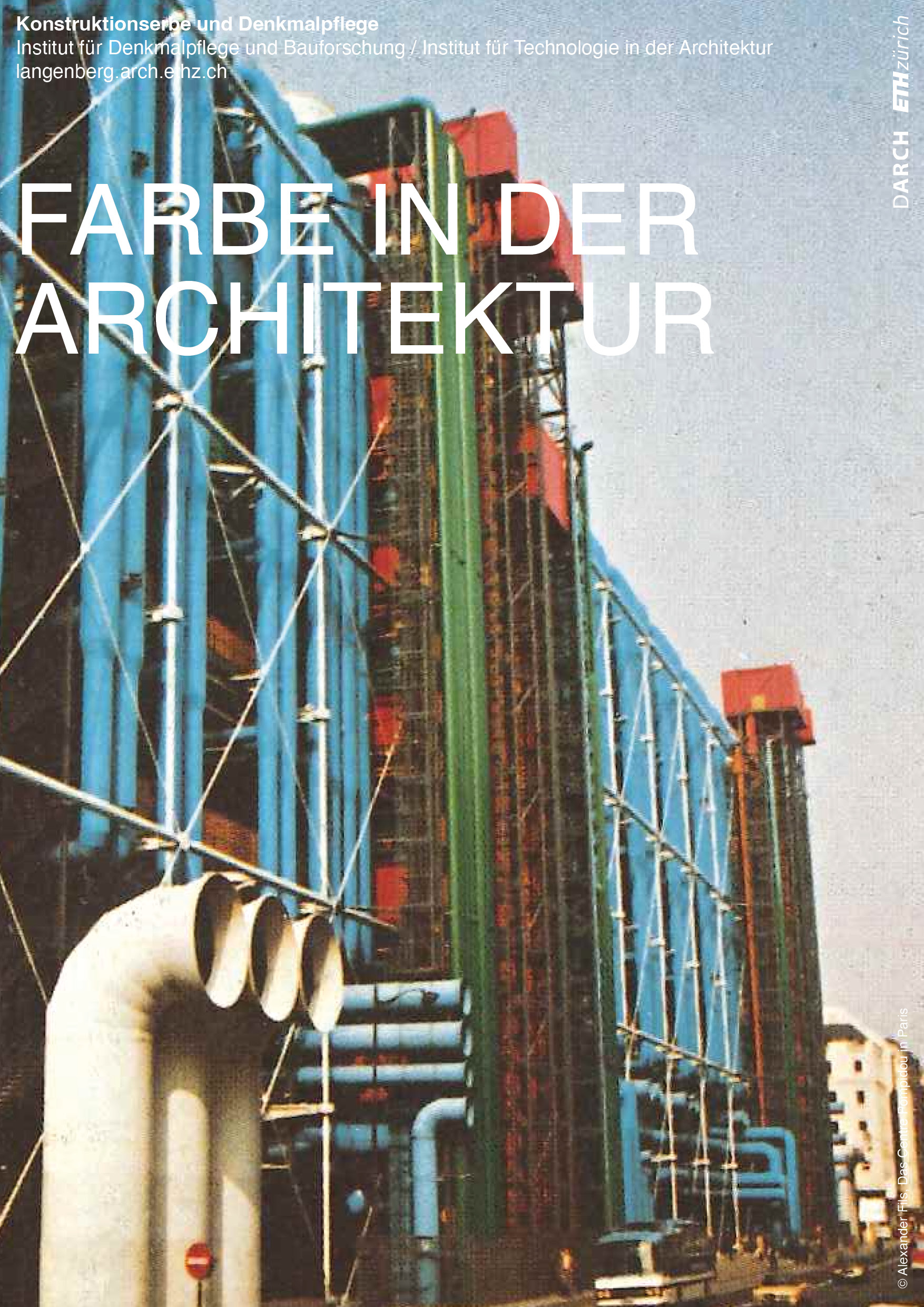
Project lead: PD Dr. Robin Rehm
This project investigates the question of color in contemporary architecture in two respects: 1. the rapidly developing chemical industry causes a quantitatively and qualitatively changed use of color in exterior and interior spaces. In contrast to the traditional craft of mural painting, efficient colorants are coming onto the market, such as dispersion paints that can be used without effort and chemically manufactured oil paints. With this project, we examine the development of the paint chemistry and its impact on architectural color in the 1970s and 1980s, as well as the use of plastics and wallpaper products. Added to this are processes of anodizing and other surface finishes that decisively change the appearance of architecture. In this context, it is no longer the material itself but the synthetic appearance that dominates. 2. The abandonment of the guiding principles of modernism, which were considered outdated in the 1960s, gave rise to changed color concepts in architectural design. Color concepts without conventionally understood aesthetic principles become important. In addition to the concepts aiming at perception or sensory illusion, the information-aesthetic and sociological understanding of color gains importance. The concept of signage appears as well. As a result of social reforms, colors accompany everyday life and leisure. Their creative use changes due to increasing mechanization. In particular, the entry into digital control of colored light causes a profound change in the aesthetics of reception. In the last two decades, computer-generated light simulation has determined the color appearance of architecture: color codes cooperate with market considerations and control the emotional impact of high-tech constructions
Robin Rehm, «Der Parthenon in Rot. Sempers Farbenarchäologie», in: Polychromie & Wissen, hg. v. Uta Hassler, München 2019, S. 40–59.
Robin Rehm, «‹Apfelgrün für den Teint und Toilette der Damen›. Semper, Chevreul und der Farbenkontrast», in: Maltechnik & Farbmittel der Semperzeit, hg. v. Uta Hassler, München 2014, S. 46–57.
Robin Rehm, «Farbenwissen des Fin de siècle. Zum Unterricht in der Farbentheorie an den Bauhochschulen», in: Maltechnik & Farbmittel der Semperzeit, hg. v. Uta Hassler, München 2014, S. 58–71.
Robin Rehm, «Geometrisches Ornament und erster Stil. Bruno Tauts farbige Fassadengestaltung der Siedlung Falkenberg», in: La conservatione delle policromie nell’architettura del XX secolo / Conservation of color schemes in 20th Century architecture, a cura di / ed. by Giacinta Jean, Lugano 2013, S. 140–159.